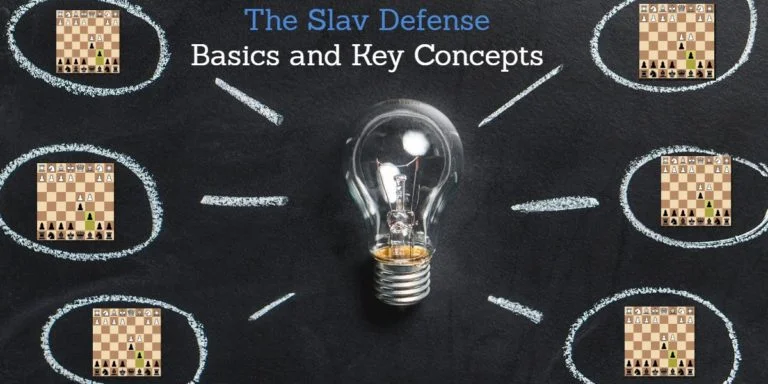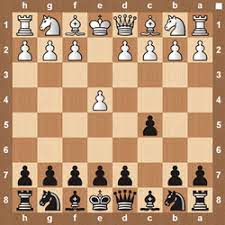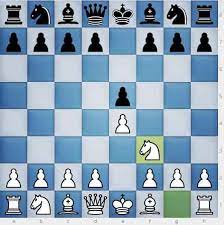”The Bulletproof chess opening”, is a term that many modern-day chess grandmasters use to describe The French Defense. It is one of the solid available openings for the black. The popularity of the French defense exists at all levels ranging from novices to grandmasters. It is one of the most solid and resilient chess openings available to the black.
In this article, we will learn about the history and the basic gameplay of the French defense, the main variations, and the advantages and disadvantages of opting for the French defense as a chess opening. Let us proceed further without any delay.

History of the French Defense
The typical name ”The French Defense” for the gameplay 1. e4 e6 2.d4 d5 came into existence only when the city of London and the city of Paris played a correspondence match in 1834. The credit for motivating other chess players to pursue the French defense as a chess opening goes to Jacques Chamouillet. There are many famous names in the world of chess that are associated with the French defense. Some of them include Wolfgang Uhlmann, Viktor Korchnoi, Rafael Vaganian, and Mikhail Botvinnik. The French defense is the best alternative for the black in order to avoid progressing into open Sicilian or the Ruy Lopez.
The French Defense
The chess moves that define the French defense are as follows-
- e4 e6
- d4 d5
The e6 d5 pawn chain created by black allows it to gain control over the center. The French defense has excellent score records and is, therefore, among the primary choices for winning the game. The basic opening setup of the French defense can progress into various pawn structures ultimately leading to one out of many variations of the French defense. It leads to asymmetry while progressing the game towards victory.
Although, white gets a space advantage in the center but the solid pawn structure of black stands strong. The French defense opening is entirely based upon the pawn structure in the center of the board.
Variations of the French Defense
This defense progress into a much more asymmetrical gameplay allowing the black to have a strategic advantage with the central pawn structure. There are 4 main variations of this chess tactic, that are listed below-
- The Exchange Variation
- The Advance Variation
- The Tarrasch Variation
- The Nc3 main line
Let us move on and discuss these variations in brief, one by one.
The Exchange Variation
This variation is principally based upon the exchange at the d5 position. This makes the position of white a lot easier and the gameplay simpler than other variations of the defense tactic. The chess moves that are typically involved in the Exchange variation are as follows-
- 1. e4 e6
- 2. d4 d5
- 3. exd5 exd5

This variation tends to bring symmetry in the gameplay and thus helps the white in making things a bit easier. But still, the black owns an opening advantage over white, and fighting for victory against black is not so easy.
The Advance Variation
This is one of the sharpest variations. Through this variation, white gain a space advantage. Yet the black has a strategic advantage and thus the more chances of a win. The typical chess moves leading the progression of the French defense into the Advance variation are as follows-
- 1. e4 e6
- 2. d4 d5
- 3. e5
The black has an option to exert even more pressure on white by the moves Nc6, Qb6. The Advance variation is very much famous among modern-day chess players.
The Tarrasch Variation
In this variation, the white retains his central pawns at e4 e6 squares. This allows him to continue developing other pieces. But at the same time, it leads to a delay in the queenside development. Thus, it offers an advantage to the black. Let us move further and enumerate the chess moves that led to the Tarrasch Variation-
- e4 e6
- d4 d5
- Nd2

There is one drawback of the Tarrasch variation that it is unable to resolve the problem of the c8-bishop. It is beneficial to the black as the d2 knight delays the development along the queenside.
The Nc3 Main line
This is the most frequently opted progressive variation. The moves that lead the progression of the defense opening into the classical Nc3 mainline variation are as follows-
- 1. e4 e6
- 2. d4 d5
- 3. Nc3

This is the variety of choices for the white against the defense played by black. But the black still has three main options to further progress into three other variations named below-
- The Rubinstein Variation- 3…dxe4
- The Winawer Variation- 3…Bb4
- The Classical Variation- 3…Nf6
Among the above-mentioned variations available to black, the Winawer variation is the best one to choose for the win. Because it offers very complex gameplay, where the black gets succeeded in snatching every possible advantage available to white.

Summary
The French Defense is very popular among modern-day chess grandmasters. Some of the famous names in the list of experts in the French defense are Hikaru Nakamura, Alexander Morozevich, Wesley So, and Ding Liren.
The reason for its tremendous popularity is that it is a very strong and reliable chess opening. With so many available progressive variations, the French defense becomes even better. The mainline Nc3 variation is the sharpest one among others. This makes it one of those chess openings, that a player should master in order to become a chess grandmaster.
You can explore other chess gameplay tactics on the Podium Blog like the Ruy Lopez Chess Opening, the Slav Defense and the Sicilian Defense. Podium also offers one to one Chess courses which can help one master this strategic game and reap its benefits.
Share with your friends





